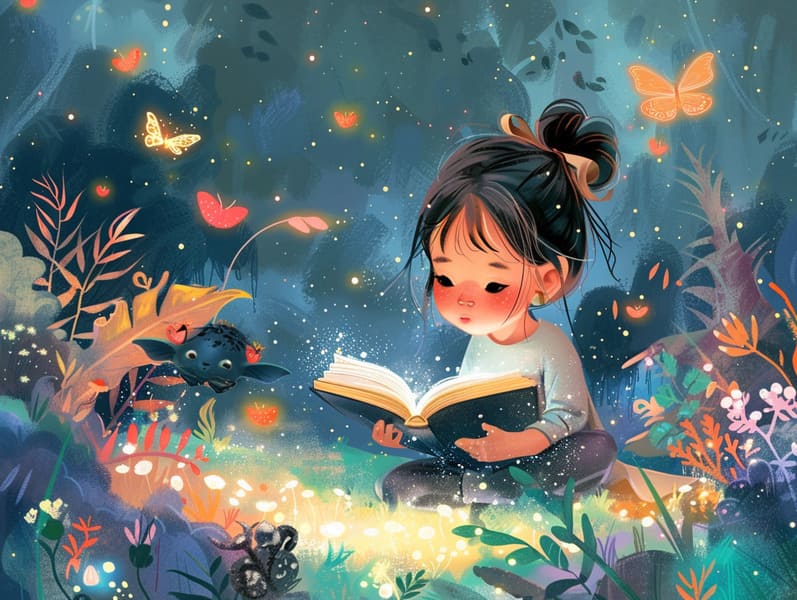
Classic fairy tales have ancient roots. These narratives have been shared from one generation to the next ages before they were ever published. They developed from a variety of civilizations, including Indigenous traditions. They were initially conveyed among mature audiences, often carrying themes and messages reflective of the societal norms and beliefs of the time.
The famous Grimm duo, Jacob and Wilhelm (the Grimm brothers), were among the first to collect and release many of these beloved stories. Their anthology, "Grimm's Fables," included stories like "The Story of Cinderella," "Hansel and Gretel," and "Snow White," which have since become hallmarks in the world of classic fairy tales. Similarly, Hans Andersen's whimsical tales, such as "The Sea Maid," and "The Ugly Duckling," have floated into hearts worldwide, guaranteeing their place in the pantheon of treasured fairy tales.
Despite their historical roots, these stories remain as meaningful as ever, especially as bedtime stories for kids. These magical stories are now available in multiple formats, including richly illustrated books, enchanting animations, and online storybooks.
Their persistent charm can be attributed to several magical reasons:
Key Lessons: Timeless fairy tales often whisper important moral lessons. Stories like "The Wolf and the Liar" teach the significance of sincerity, while "The Tale of the Tortoise and the Hare" underline the traits of perseverance and modesty. These tales offer young readers clear distinctions between right and wrong, shaping their moral compass in a subtle yet impactful way.
Empathy and Understanding: Ancient fairy tales frequently illustrate protagonists facing struggles and tests, encouraging readers to sympathize with their struggles and boost their triumphs. For instance, "Beauty and the Beast" illustrates the merit of looking deeper to recognize the real person of a being, advancing compassion and recognition.
Cultural Knowledge: Many ancient fairy tales are rooted in the cultural contexts from which they emerged. Immersing in these stories can provide intriguing perspectives into different social structures, cultivating a sense of global awareness and understanding.
Inventiveness and Fantasy: The mythical elements in traditional fairy tales—wizardry and magic—fuel children’s innovative ideas. These fairy tales carry readers to enchanted realms, fostering fantasy ideas and a sense of enchantment that remains a lifetime.
Ancient fairy tales are not only delightful but also edifying. They serve as enchanted tools in cultivating various cognitive and affective skills in young readers. When timeless fairy tales are read aloud, they advance speech development by teaching new vocabulary and complex sentence structures. This practice also develops auditory perception and concentration, as the young concentrate deeply, expectant to see what happens next.
Furthermore, debating the themes and characters of timeless fairy tales can promote evaluative skills and critical thinking. Young readers are taught to discover patterns, predict happenings, and realize cause and effect. These talks also assist children articulate their thoughts and feelings, contributing to their emotional intelligence.
In today’s modern era, the availability of digital fairy tales has made these stories more acquirable than ever. Internet resources and programs present vast collections of bedtime fairy tales that can be seen or listened via anytime, anywhere. Fairy tales voiced are particularly favored, giving an delightful method for young ones to appreciate these enchanting tales. Audio stories and narrated videos bring characters and settings to life, often accompanied by magical musical scores and melodies that boost the tale-telling adventure.
The lasting allure of classic fairy tales lies in their ability to alter to current times while sustaining their fundamental ideas. Contemporary modernizations of these fairy tales often showcase more inclusive protagonists and modern settings, making them accessible to today’s audience. However, the essential messages of spirit, compassion, and equity remain unchanged, continuing to reach listeners of all ages.
Classic fairy tales also offer a sense of calm and knownness. They share a organized narrative with a distinct beginning, middle, and end, often closing with the conclusion of conflicts and the triumph of good over bad. This constancy can be reassuring for young readers, offering a sense of sturdiness in an ever-changing world.
Traditional fairy tales continue to enchant and instruct new generations, maintaining their mystique and impact in modern society. As children's night stories, they introduce a perfect blend of charm and understanding, boosting moral values, empathy, and creativity. The proliferation here of online storybooks and the commonness of fairy tales narrated warrant that these old fairy tales remain attainable to new generations.
By maintaining and releasing these fairy tales, we continue to value the rich tapestry of mythology and cultural heritage. Whether you are seeing a beautifully illustrated book, seeing a online library, or listening to an audio story, the elegance of traditional fairy tales is always within reach. These tales illustrate of the continued impact of storytelling and its ability to unite us across eras and regions.
Regardless if you are reading a beautifully illustrated book, viewing a internet collection, or listening through an narrated book, the splendor of famous fairy tales is always within reach.
These narratives illustrate of the steadfast magic of narratives and its ability to bind us across time and space, forging a link that delights and instructs alike.
Comments on “The Creation of Bedtime Fairy Tales and Their Unfading Appeal.”